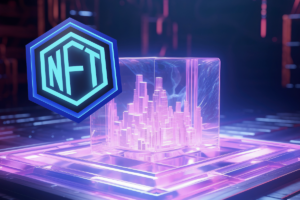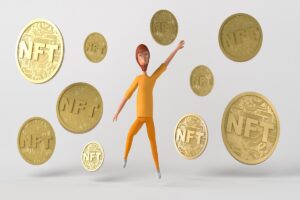Blockchain-verified non-fungible tokens (NFTs) enable unprecedented modes of scarce digital ownership, trading, and creative participation across video game ecosystems—a potentially disruptive shift transforming player incentives and developer possibilities alike while necessitating thoughtful regulation amidst rapid growth.
Decoding NFTs
NFTs manifest as unique cryptographic assets representing singular virtual goods—verified tokens on blockchains substantiating genuine ownership of individualized digital creations spanning art, music, videos or gaming collectibles. Their programmable scarcity establishes authenticity and traceable rarity.
NFTs Resonate with Gamers
Given gaming’s historic affinity for rare loot and achievements, NFT characteristics around verified authenticity, demonstrable scarcity, liquid ownership portability between titles, and flexible embedded utility intertwine naturally with enthusiast aspirations. As awareness spreads, investment and development activity explodes.
Transforming Game Economies
By introducing legitimate digital ownership to virtual environments, NFT integrations reshape video game possibilities surrounding customization, community, value creation, and participatory economies.
Player Ownership Arrives
NFTs enable players to truly own, trade or sell once locked-away rare items—a radical departure from closed ecosystems. Digital goods become provably unique collectibles with intrinsic and extrinsic meaning.
Enriching Experiences
Developers additionally leverage NFT affordances to craft more rewarding participatory systems for platforms like Gclub Casino:
Personalized avatars, skins, accessories, and metaverse continuity grant players identity persistence and social connectivity. In-game effort, especially prominent in environments such as Gclub, rewarded with open market asset value, boosts engagement for some by linking virtual progression to real income.
Of course, balanced integration remains imperative to avoid predatory algorithms or unhealthy play incentives as exploration continues.
Impacts on Development and Economics
NFTs present developers game-changing creative possibilities for deepening social ecosystem participation and decentralized community alignment over time rather than individual sales.
More Expressive Game Design
Verified digital ownership over in-game assets empowers expanded player agency through customized identity, accumulating history, social connections, and incentive structures around effort rewarded by open ecosystems.
Participatory Revenue Models
NFTs enable sustainably sharing value together with engaged communities rather than one-time transactions—a seismic shift for gaming economics.
Obstacles around environmental impact, risky speculation and regulation necessitate ongoing good-faith balancing between innovation aims and ethical adoption.
NFT Gaming Case Studies
Various games pioneer NFT models spanning genres:
Axie Infinity, Sandbox, Decentraland
These emblematic NFT titles encompass battling creature collection, creative social metaverse building, and tradable virtual real estate—each leveraging blockchain verifiability for unique persistent objects, securable player equity, and immutable records of history and ownership with clear real-world value exchange.
Success in Numerous
Individual success stories shine; Sandbox hosted a Snoop Dogg concert in their metaverse while Axie Infinity generated $1.3+ billion trading volume in Q3 2021 alone—showcasing massive disruptive potential.
Adoption indicators suggest integrated NFT game models will compose a sizable portion of gaming moving forward as creative possibilities and verifiable digital ownership compel enthusiasm. Synthesis with emergent augmented reality, virtual reality and artificial intelligence could lead interactive entertainment into new eras if balanced responsibly amidst exponential technological change to align community trust, regulatory consensus, and participatory ethics with developers.
Through carefully expanding creative possibility spaces rather than extracting additional surplus value from communities, NFT models may pioneer entirely new symbiotic creator-player relationships and successfully transition from speculative hype cycles into sustainable sources of value nourishing gaming ecosystems for years hence.
Frequently Asked Questions
How can NFT games increase motivation?
Rewarding player efforts with transferable assets verifiably scarce and valued in external markets can compound engagement drives by directly linking in-game progression to accumulating external income for some demographics.
What coming technologies might NFTs enhance?
Intersection with augmented reality, virtual reality and artificial intelligence could enable radically expanded applications of interactive non-fungible token models across emerging gaming frontiers.
Will regulation restrain NFT gaming innovation?
Responsible regulation need not severely limit underlying technological potential but rather channel it constructively through aligning stakeholder incentives, establishing ethical norms, protecting vulnerable groups, and building trust.
Might NFT models harm gaming communities?
Without mindfully assessing potential harms around predatory monetization, speculation risks, environmental externalities, fraud vulnerability, and conflict incentives, irresponsible NFT integration could accentuate gaming ecosystem exploitation rather than restoring equilibrium.
What level of NFT adoption seems likely ahead?
Current market indicators suggest NFT gaming integrations in some form will permeate the majority of video games within several years. However, sustainable healthy ecosystems depend on cooperative nurturing rather than extractive colonization by any party.
Author
-

The views and opinions expressed in this guest post are solely those of the author, and do not necessarily reflect the official policy or position of NFT News Today.




